
How to Use 12v 7ah Battery: Examples, Pinouts, and Specs
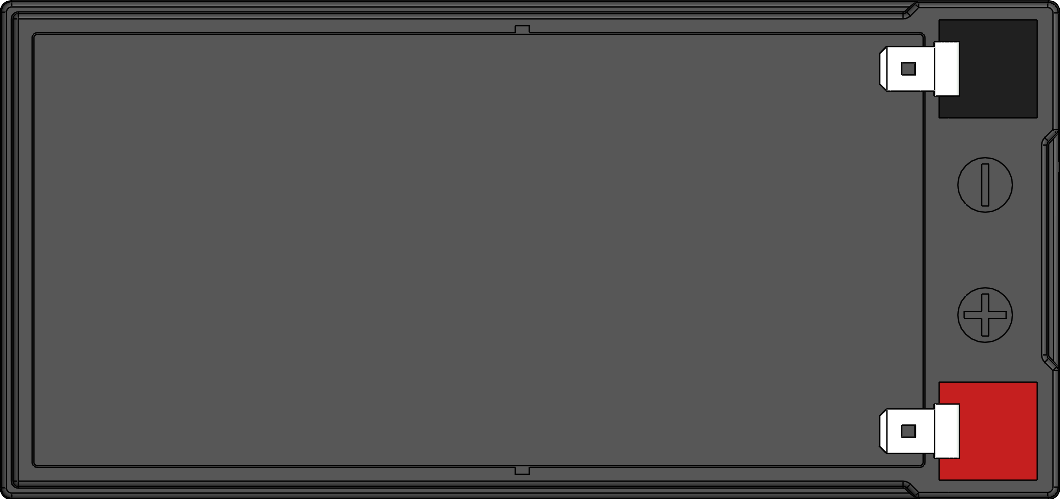
 Design with 12v 7ah Battery in Cirkit Designer
Design with 12v 7ah Battery in Cirkit DesignerIntroduction
The 12V 7Ah battery is a rechargeable sealed lead-acid (SLA) battery that delivers a nominal voltage of 12 volts and a capacity of 7 ampere-hours (Ah). It is widely used in applications requiring reliable and long-lasting power, such as uninterruptible power supplies (UPS), emergency lighting systems, alarm systems, and small-scale renewable energy setups. Its compact size and robust design make it suitable for both stationary and portable use.
Explore Projects Built with 12v 7ah Battery
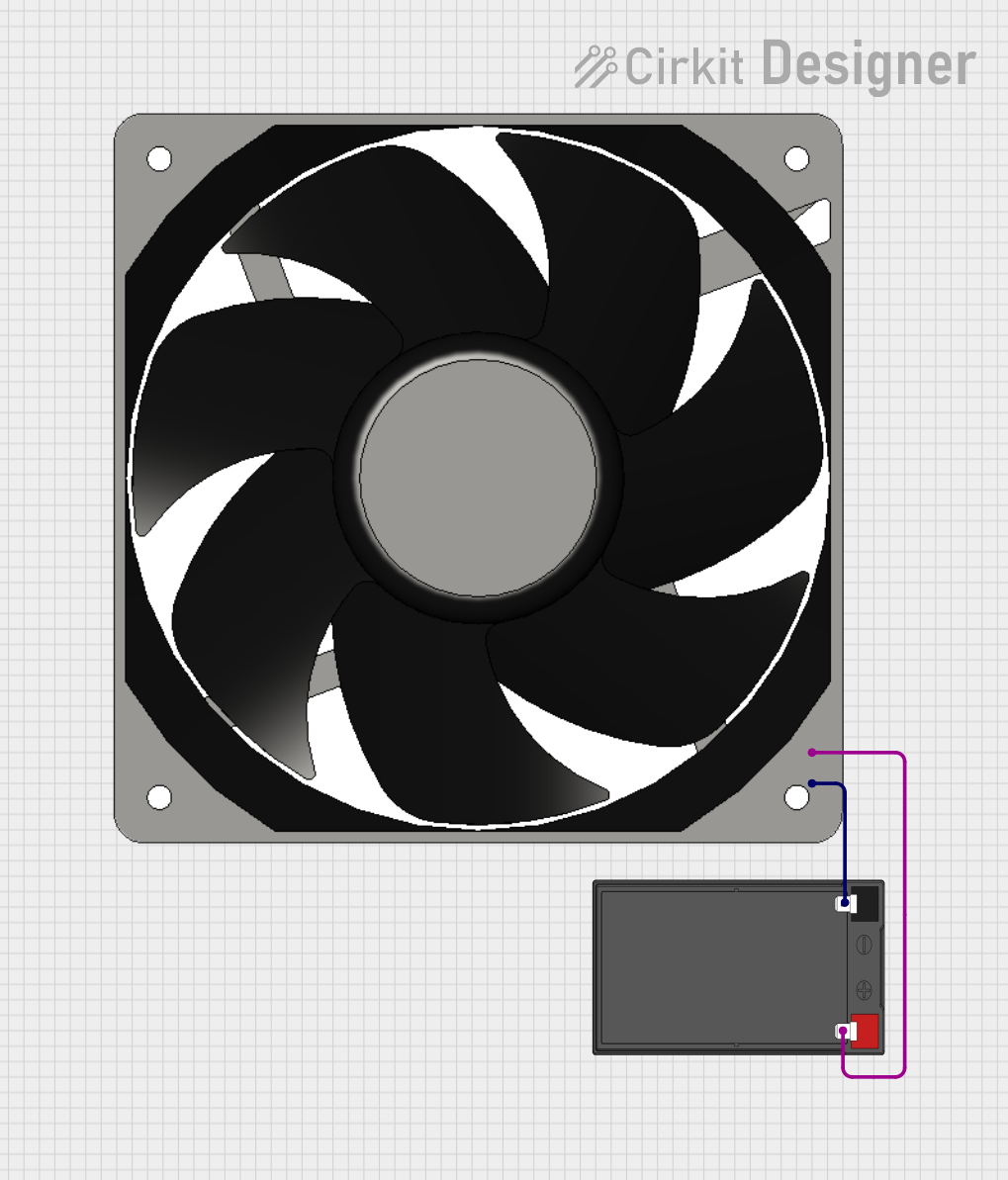
 Open Project in Cirkit Designer
Open Project in Cirkit Designer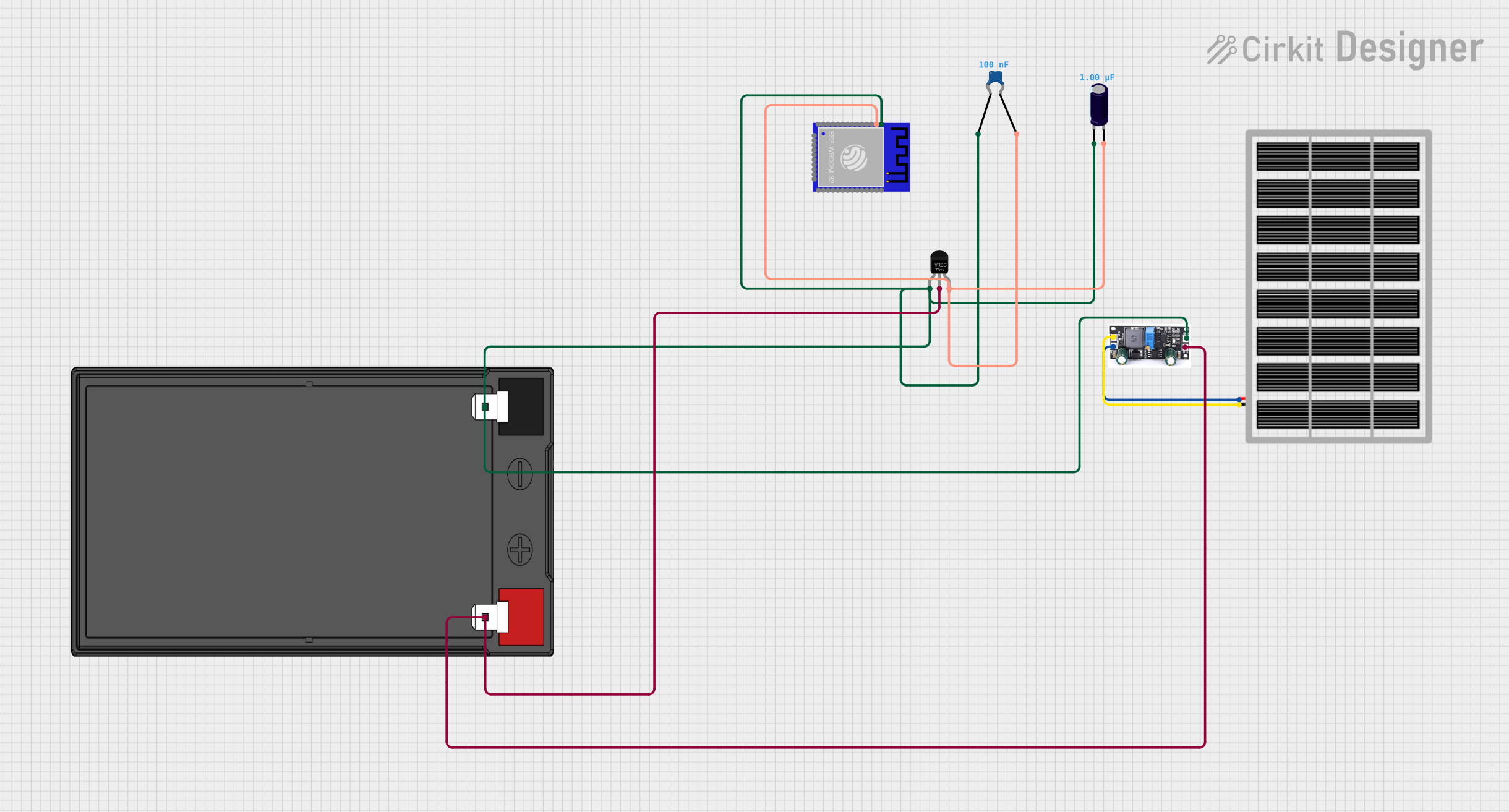
 Open Project in Cirkit Designer
Open Project in Cirkit Designer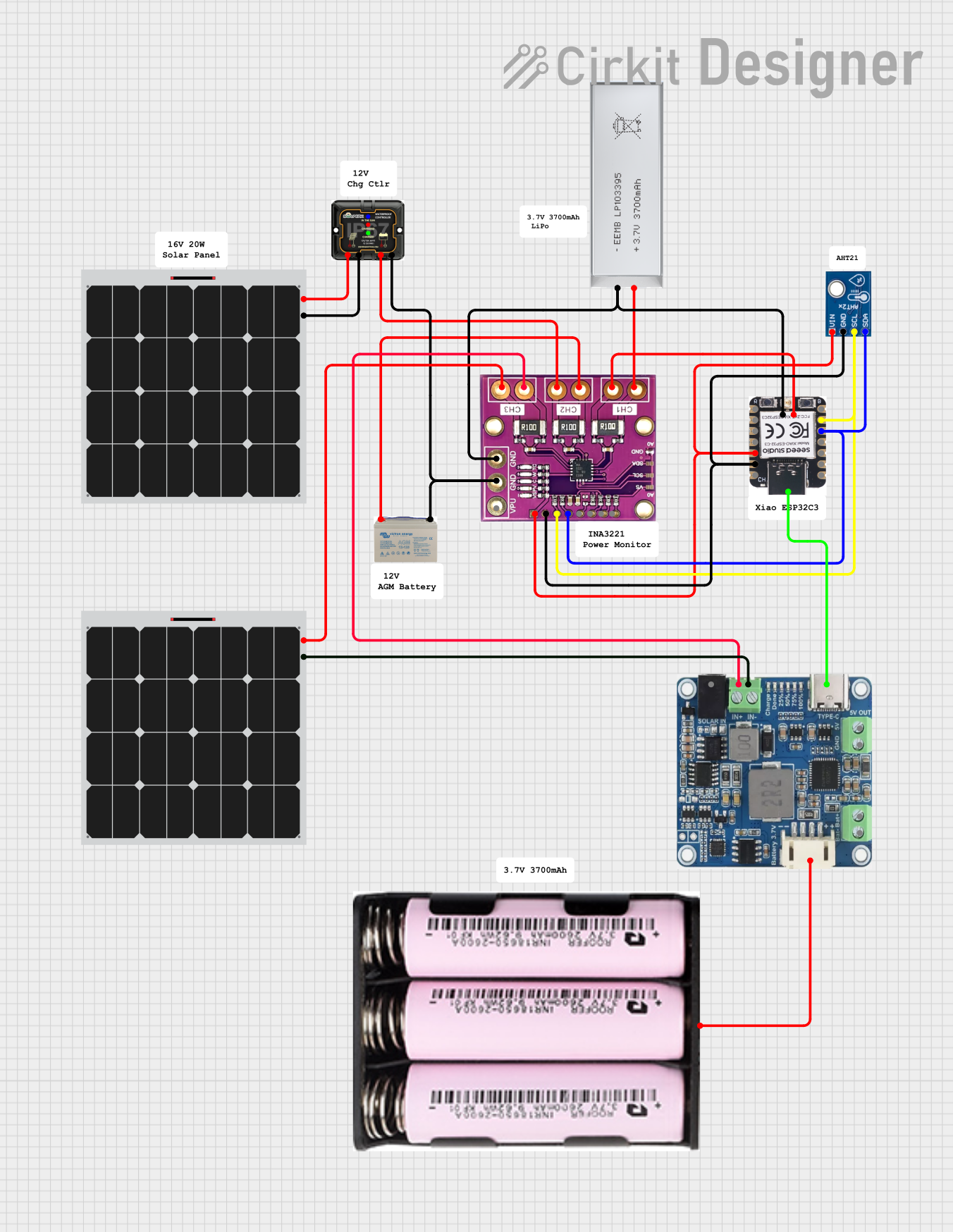
 Open Project in Cirkit Designer
Open Project in Cirkit Designer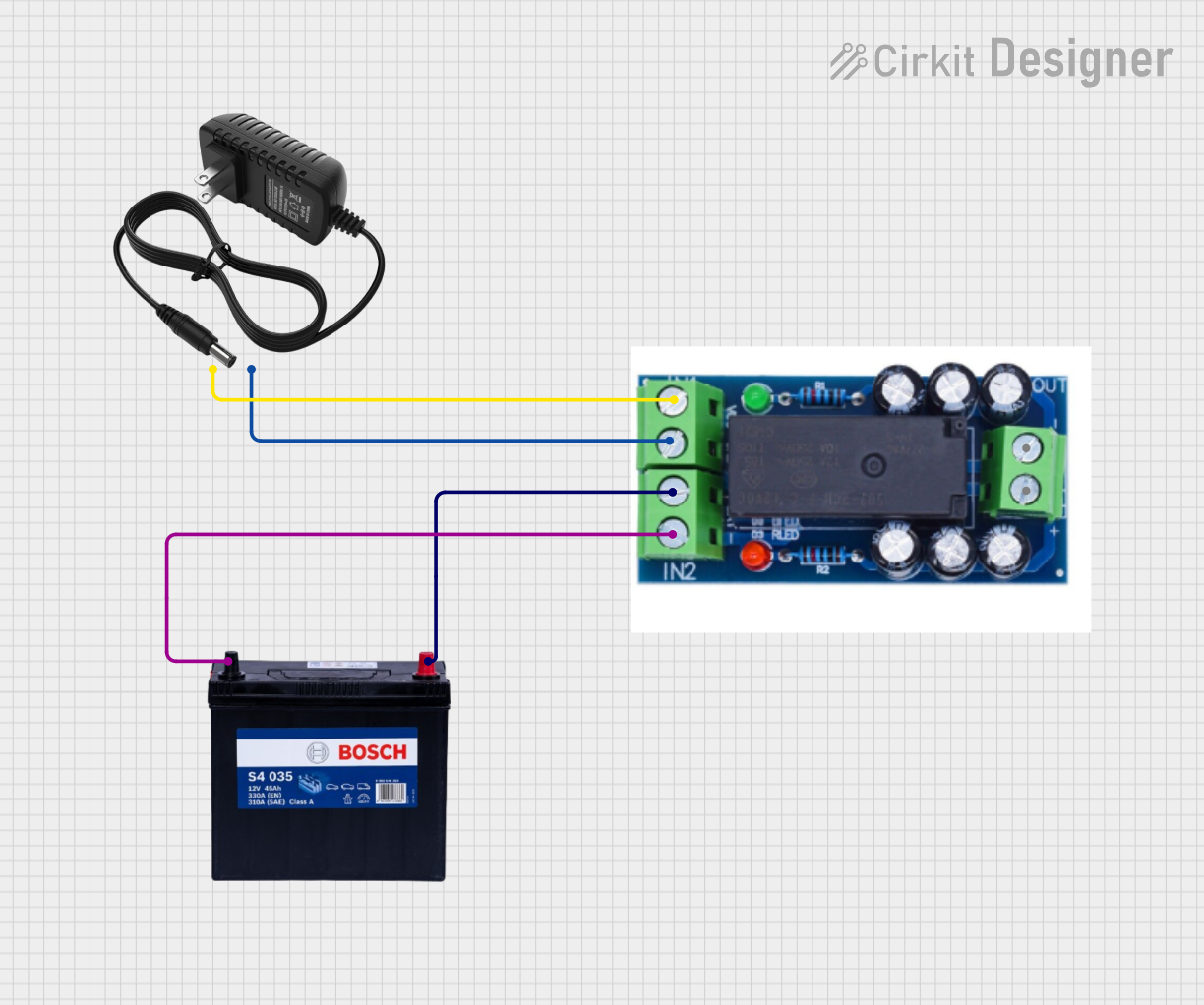
 Open Project in Cirkit Designer
Open Project in Cirkit DesignerExplore Projects Built with 12v 7ah Battery

 Open Project in Cirkit Designer
Open Project in Cirkit Designer
 Open Project in Cirkit Designer
Open Project in Cirkit Designer
 Open Project in Cirkit Designer
Open Project in Cirkit Designer
 Open Project in Cirkit Designer
Open Project in Cirkit DesignerCommon Applications and Use Cases
- Uninterruptible Power Supplies (UPS): Provides backup power during outages.
- Emergency Lighting: Powers lighting systems in case of power failure.
- Alarm and Security Systems: Ensures continuous operation of security devices.
- Renewable Energy Systems: Stores energy from solar panels or wind turbines.
- Portable Electronics: Powers small devices like portable fans or radios.
- Electric Vehicles and Toys: Used in scooters, ride-on toys, and similar devices.
Technical Specifications
The following table outlines the key technical details of the 12V 7Ah battery:
| Parameter | Specification |
|---|---|
| Nominal Voltage | 12V |
| Capacity | 7Ah (Ampere-hours) |
| Chemistry | Sealed Lead-Acid (SLA) |
| Maximum Charging Voltage | 14.4V to 14.7V |
| Float Voltage | 13.5V to 13.8V |
| Maximum Discharge Current | Typically 105A (for 5 seconds) |
| Operating Temperature | -20°C to 50°C |
| Dimensions (L x W x H) | ~151mm x 65mm x 94mm |
| Weight | ~2.1kg to 2.3kg |
| Terminal Type | F1 or F2 Faston Tabs |
| Cycle Life | ~200 to 300 cycles (at 50% depth of discharge) |
Terminal Configuration
The 12V 7Ah battery typically features two terminals for electrical connections. The terminal details are as follows:
| Terminal | Description |
|---|---|
| Positive (+) | Connects to the positive side of the circuit |
| Negative (-) | Connects to the negative side of the circuit |
Usage Instructions
How to Use the 12V 7Ah Battery in a Circuit
Determine the Load Requirements:
- Ensure the connected load does not exceed the battery's capacity (7Ah) or discharge current rating.
- For example, a 1A load can run for approximately 7 hours on a fully charged battery.
Connect the Terminals:
- Use appropriate connectors to attach the positive terminal (+) to the positive side of the circuit and the negative terminal (-) to the negative side.
- Ensure the connections are secure to prevent sparking or loose contacts.
Charging the Battery:
- Use a compatible SLA battery charger with a charging voltage of 14.4V to 14.7V.
- Avoid overcharging by using a charger with automatic cutoff or float charging capability.
Discharging the Battery:
- Do not discharge the battery below 10.5V to prevent damage and reduce cycle life.
- Use a low-voltage cutoff circuit to protect the battery from deep discharge.
Mounting and Placement:
- Place the battery in a well-ventilated area to prevent heat buildup.
- Mount the battery upright to avoid leakage, even though it is sealed.
Important Considerations and Best Practices
- Avoid Overcharging: Overcharging can lead to overheating and reduced battery life.
- Prevent Deep Discharge: Repeated deep discharges can significantly shorten the battery's lifespan.
- Temperature Management: Operate the battery within the specified temperature range for optimal performance.
- Storage: Store the battery in a cool, dry place when not in use. Recharge every 3-6 months to maintain capacity.
- Safety Precautions: Avoid short-circuiting the terminals, and handle the battery with care to prevent damage.
Example: Connecting to an Arduino UNO
The 12V 7Ah battery can be used to power an Arduino UNO via a voltage regulator (e.g., LM7805) to step down the voltage to 5V. Below is an example circuit and code:
Circuit Setup
- Connect the battery's positive terminal to the input of the LM7805 voltage regulator.
- Connect the regulator's output to the Arduino UNO's 5V pin.
- Connect the battery's negative terminal to the Arduino's GND pin.
Arduino Code Example
// Example code to blink an LED using an Arduino UNO powered by a 12V 7Ah battery
// Ensure the battery is connected via a voltage regulator to provide 5V to the Arduino
const int ledPin = 13; // Built-in LED pin on Arduino UNO
void setup() {
pinMode(ledPin, OUTPUT); // Set the LED pin as an output
}
void loop() {
digitalWrite(ledPin, HIGH); // Turn the LED on
delay(1000); // Wait for 1 second
digitalWrite(ledPin, LOW); // Turn the LED off
delay(1000); // Wait for 1 second
}
Troubleshooting and FAQs
Common Issues and Solutions
| Issue | Solution |
|---|---|
| Battery does not charge | Check the charger output voltage and connections. Ensure the charger is compatible. |
| Battery discharges too quickly | Verify the load current. Replace the battery if it has reached the end of its cycle life. |
| Overheating during charging | Ensure the charger is not overcharging. Use a charger with automatic cutoff. |
| Low voltage after charging | Check for sulfation or internal damage. Replace the battery if necessary. |
| Terminals corroded or damaged | Clean the terminals with a suitable cleaner. Replace connectors if needed. |
FAQs
Can I use the 12V 7Ah battery in parallel or series?
- Yes, you can connect multiple batteries in parallel to increase capacity or in series to increase voltage. Ensure all batteries are of the same type and charge level.
How long does it take to charge the battery?
- Charging time depends on the charger's current rating. For example, a 1A charger will take approximately 7-8 hours to fully charge the battery.
Is the battery safe to use indoors?
- Yes, the sealed design prevents leakage, but ensure proper ventilation to avoid heat buildup.
What is the expected lifespan of the battery?
- The battery typically lasts 3-5 years, depending on usage and maintenance.
By following this documentation, you can effectively use and maintain the 12V 7Ah battery for a wide range of applications.